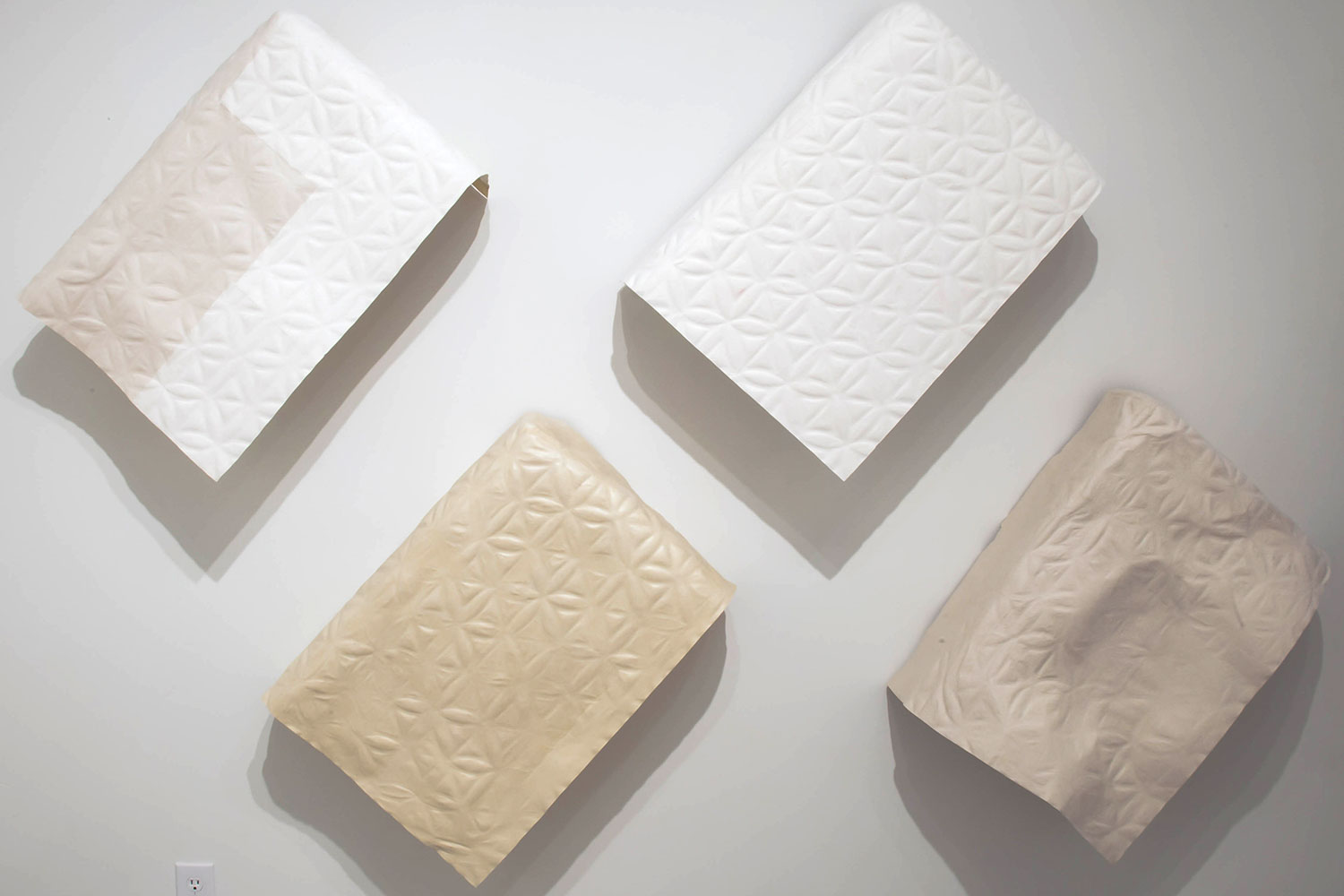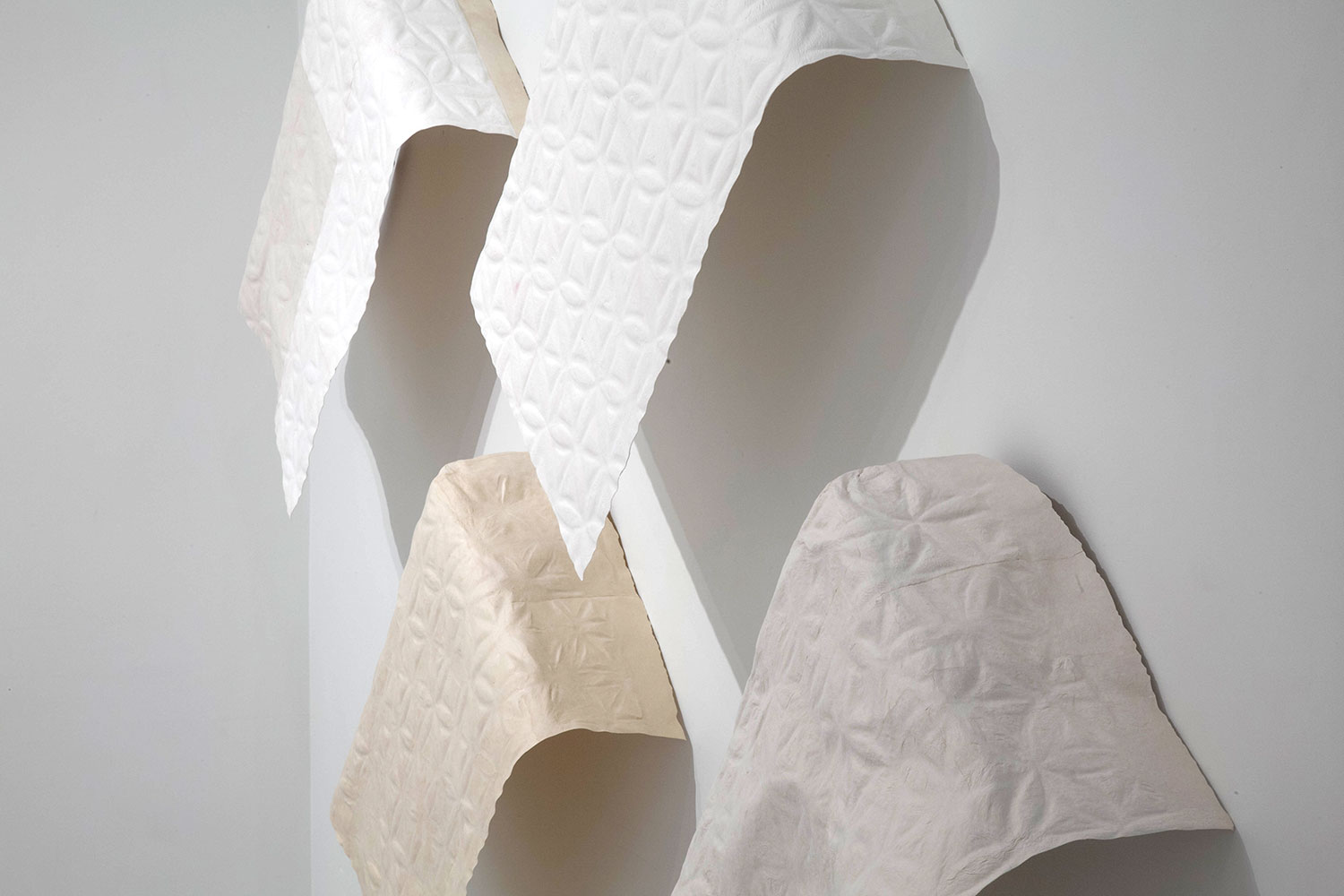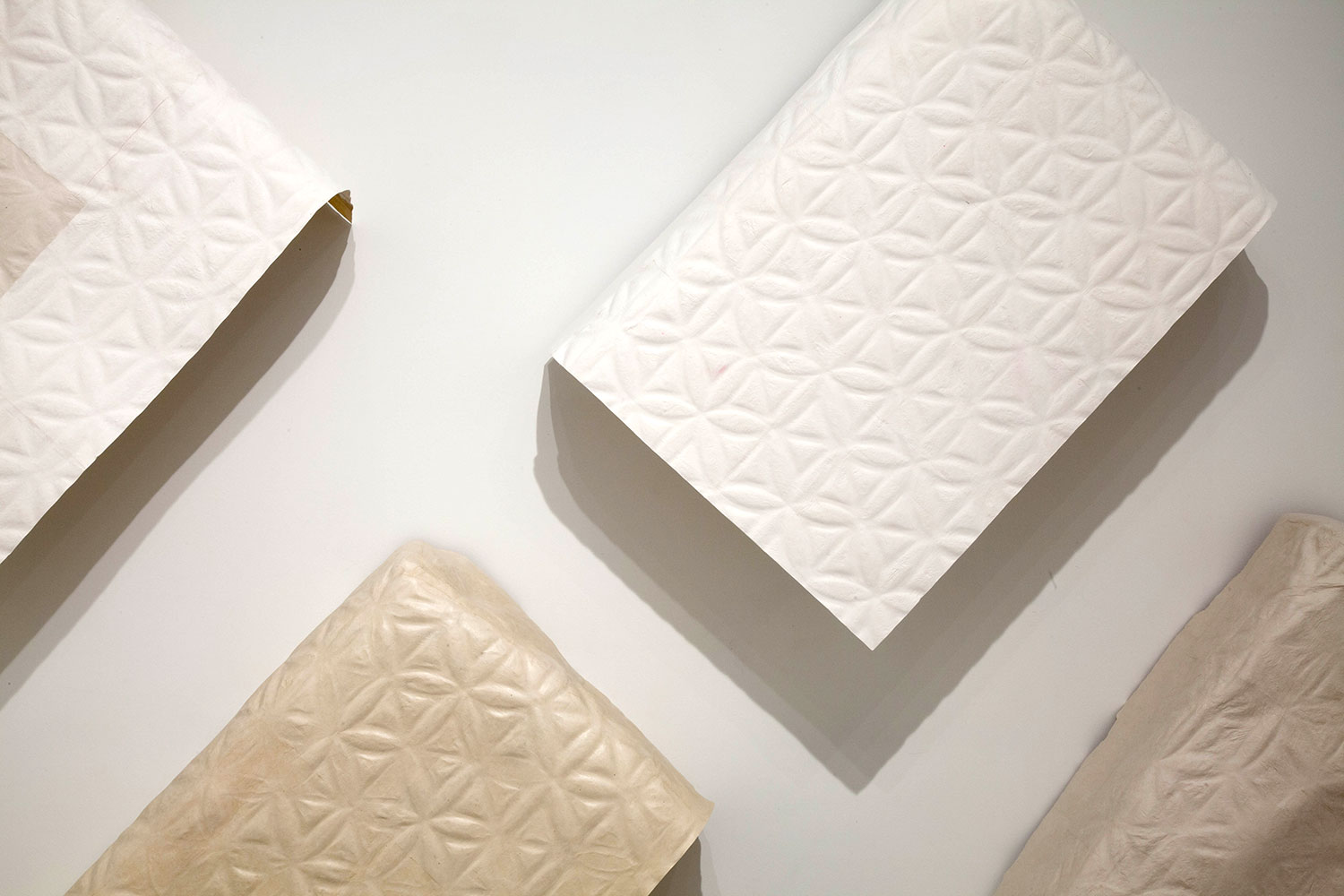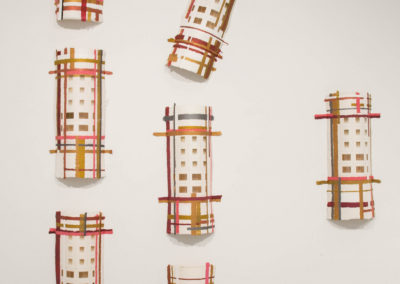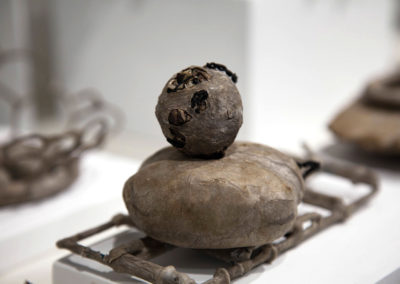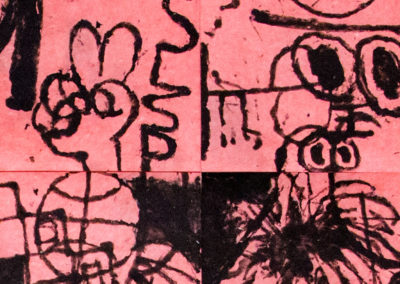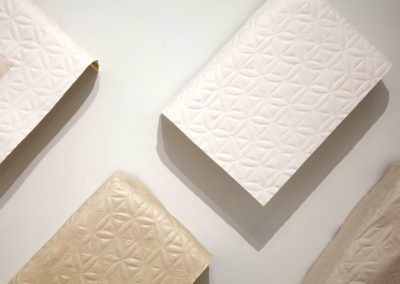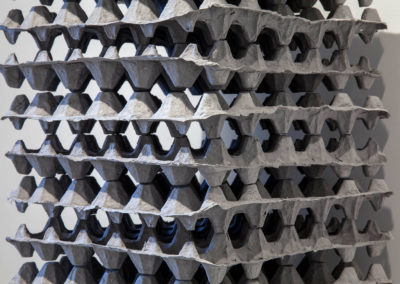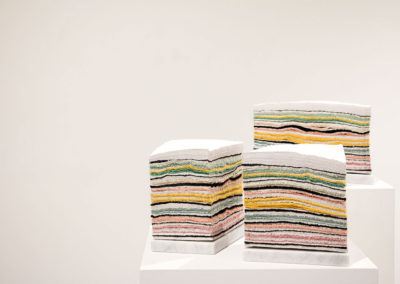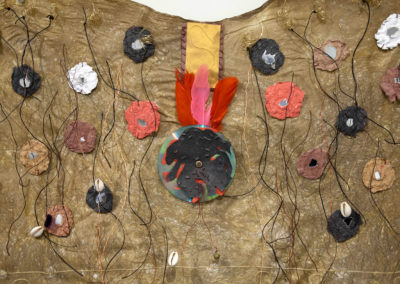Tim Manalo
Artist Statement
The idea for this work came from casual encounters with discarded mattresses lying outside on the curb. Their distorted forms and discoloured surfaces from the outdoor weather conditions were like rotting carcasses left to erode over time. Inspired by its aesthetic, I saw it as a representation of passing time and the ephemerality of intimate moments in life. A mattress is often a site for bodies inhabiting a space, a place for self reflection and deep contemplation, and is often where dreams are made. I wanted to try and capture this narrative of the discarded mattress by using the natural transformative qualities of paper.
For this project, a part of my own mattress was 3d scanned and then printed into a mould, that was then used for creating the paper casts. Displayed in a staggered flow, four paper casts of the corner part of my mattress are mounted on the wall. The first is made up of a combination of the three paper fibres that were used for this work: cotton, gampi, and abaca. The last three casts are each made entirely of these three fibres and arranged in order of most uniform to most deformed, as a way of highlighting the different characteristics of each fibre.
Cotton, gampi and abaca were selected because of the personal relationship I had with them. My own cotton bedsheets were beaten to make the pulp used for the cotton casts, and the gampi and abaca are directly harvested from the Philippines, my family’s homeland.
Tim Manalo, Tender, installation shots, abaca, cotton and gampi cast paper, 20 x 28 x 8 inches each. variable edition of 4
Bio
Tim Manalo is a sculpture and installation artist born and raised in Toronto, Canada. He received his BFA from OCAD University in 2010, from the Sculpture and Installation program, graduating with honours and awards. He has an extensive background working in the fabrication industry as an in-house sculptor and studio apprentice for companies specializing in commercial outdoor sculptures, costume and props, and custom interior installation art. He considers his work to be very technical, usually employing mould-making and other intensive fabrication techniques into his process. In his practice, he is interested in conceptions of the self and identity and ways they can be represented through objects that speak about the body and relationship to its surroundings. He has exhibited his work in various commercial and artist-run venues in Canada and the United States.

